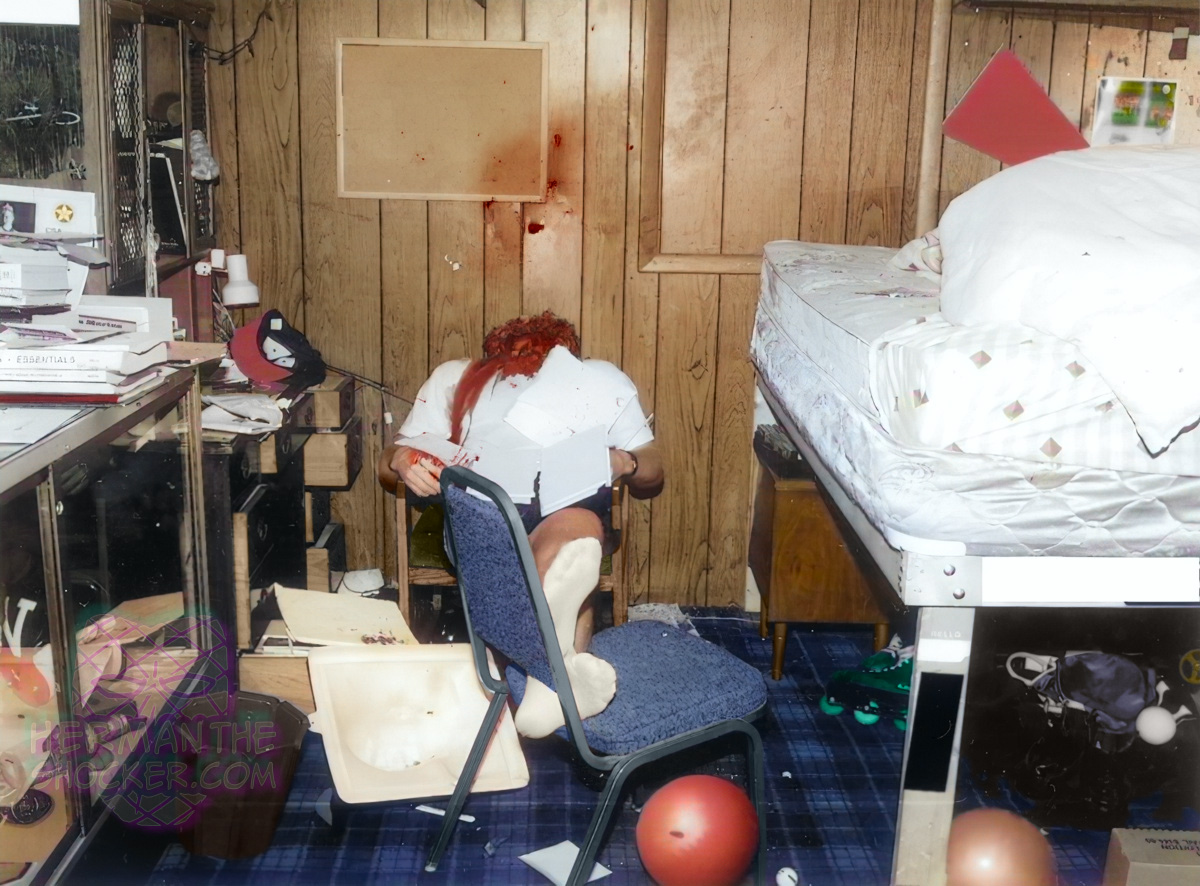US. A 20-year-old white man was found dead by his father in the subject’s bedroom, reclining in a chair. The decedent lived in a basement apartment in his father’s residence and worked as a paramedic. An audible blast emanating from the basement prompted his father to investigate. The victim was noted to have sustained disfiguring craniofacial injuries. Investigators observed high-velocity blood spatter on the wall behind him and on the ceiling. Plaster debris from ceiling tiles above his head had fallen on his lap.
On a brief initial search of the scene, investigators did not recover firearms or explosive materials. A matchbook was observed lying by the victim’s left side. He was a known nonsmoker. A hand-written suicide note was recovered from the scene. Investigators learned from the victim’s family and friends that he had not experienced any medical problems or recent domestic problems, except for his recent decision to terminate a relationship with his girlfriend. A close friend admitted to investigators that the decedent “kind of liked to fool around with fireworks and stuff.”
Autopsy examination confirmed the predominantly midline, explosive, craniofacial fracture-avulsion traumata. Extensive comminuted basilar skull fractures associated with pulpifaction of brain matter were evident. In addition, gray metallic and white-gray granular materials were deposited throughout the lacerated tongue and cranio-facial injuries. The hands and torso lacked significant injuries. Radiographic examination of the head and neck exhibited no radiopaque metallic projectile materials. Toxicologic blood-screening results were negative.
A second court-ordered scene investigation by the bomb squad assigned to the case resulted in the recovery of illegal explosive devices in the home of the deceased. A comparison of the trace evidence retrieved at autopsy with the explosives from the home matched the device to an M-100 explosive. The M-100 device is roughly equivalent to a quarter stick of dynamite and falls under the grouping of illegal improvised power-technique explosive devices. Investigators determined that the decedent lit the stiff wick located in the center of the device and placed the end into his mouth before it exploded.
Latest posts









